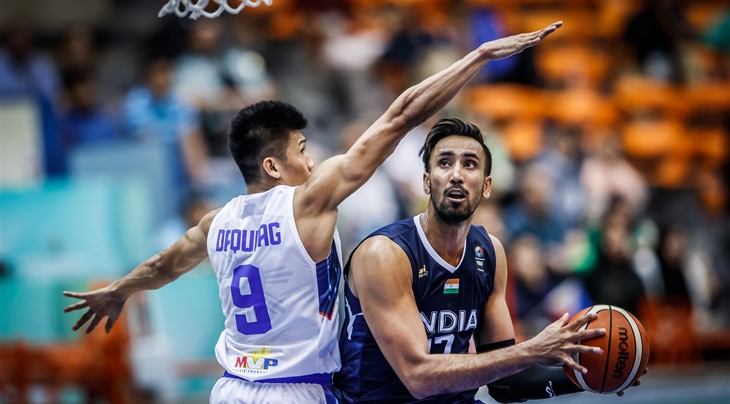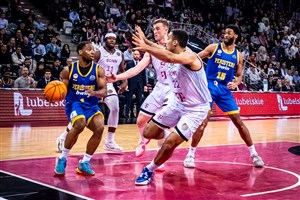
Have the Philippines and India become too good for their sub-zones?
MANILA (Enzo Flojo's Asia on my Mind) - In the span of around two weeks, both the Philippines and India qualified to the FIBA Asia Cup 2017 by winning their respective sub-zones in dominant fashion.
The Philippines ruled the SEABA Championship 2017 that was held in Manila from 12-18 May, winning all six of their games in emphatic fashion. Gilas Pilipinas romped to their eighth SEABA title overall, beating opponents by an average of 58.7 points per game. They clinched their tickets to the FIBA Asia Cup and the Asian Qualifiers for the FIBA Basketball World Cup 2019 after a convincing win over erstwhile undefeated Indonesia on the final day, 97-64. This is the first time that only one SEABA team will be featured in the FIBA Asia Cup, and it came to no surprise that the Filipinos won the right to represent their sub-zone in Beirut later this year.
More recently, India powered their way to a five-peat in their sub-zone after ruling the SABA Championship 2017 that was held in the Maldives. The Young Cagers bested all their four opponents in the competition, beating them by an average of 46.5 points per game. No other teams were able to mount a significant challenge to India, who boasted a near-full-strength roster to ensure their entry into the FIBA Asia Cup and the Asian Qualifiers for the FIBA Basketball World Cup 2019, where they are in the same group as West Asian sides Lebanon, Jordan and Syria. No other SABA team has really been able to qualify at the continental level in recent memory, and India kept that streak alive with their SABA Championship sweep.
Such dominance from both the Philippines and India has really cemented their place among the most competitive teams in Asia. The Philippines have become a world-class Asian squad after suffering through the dark ages of the mid-2000s, implementing key reforms that have sparked a resurgence in their international basketball potency and regained for them their status among the biggest global basketball markets. India, for their part, have ushered in a special generation of players led by the big three of Amritpal Singh, Vishesh Bhriguvanshi and Amjyot Singh. Many believe that these three have the potential to be among Asia's elite, and their commitment to the international game has borne fruit in India's recent rise from doormats to dark horses to legitimate contenders.
It is also clear that both countries have undoubtedly left their closest neighbors in the dust in terms of talent and experience. Sure, the level of basketball is improving in most if not all parts of Asia, including key countries in both the SEABA and SABA sub-zones, but, by and large, the Filipinos and Indians are head and shoulders above everyone else.
This got me thinking. I find this phenomenon quite similar to what happened in Oceania with the perpetual dominance of Australia and New Zealand. Because those were really the only two teams making a splash in that part of the world, eventually it made sense for them to be included in FIBA Asia starting this year. Given how dominant the Philippines and India have been in their own respective sub-zones, maybe we can begin thinking of a similar realignment for those two squads as well?
Would it be better for both India and the Philippines if they were placed in more competitive sub-zones for future tournaments? Would it also be better for the teams they'd leave behind because these teams would finally have a stronger chance of winning and advancing to higher levels of competition? What if we place India in the Gulf sub-zone and include the Philippines in the EABA sub-zone? That could open up doors for teams like Bangladesh, Sri Lanka, Indonesia and Thailand to make it to the continental level tournaments.
This, I think, is where the two levels of the New Competition System come in. With Level I and II, teams all over Asia will be given the chance to compete against other squads with relatively similar degrees of talent and experience. e should see fewer 50-point blowouts and more competitive home-and-away games that will entice fans even more. The Philippines and India may seem to have become too good for their own sub-zones, but for the foreseeable future, they will constantly take on much more challenging teams in the FIBA Asia Cup 2017 and the Asia Qualifiers to the FIBA Basketball World Cup 2019.
Enzo Flojo
FIBA
FIBA's columnists write on a wide range of topics relating to basketball that are of interest to them. The opinions they express are their own and in no way reflect those of FIBA.
FIBA takes no responsibility and gives no guarantees, warranties or representations, implied or otherwise, for the content or accuracy of the content and opinion expressed in the above article.



















